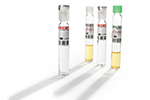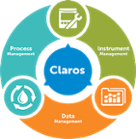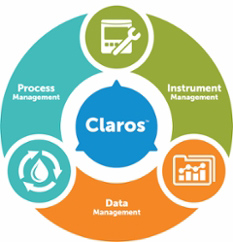-
Products
-
Lab Instruments
-
Lab Meters and Probes
Calibration Standards Sension+ Meters and ProbesOther Reagents
- Chemistries, Reagents, and Standards
-
Online Analysers
Ammonium Analysers Analytical Shelters Chlorine Analysers
- CL17sc
- CL10sc Amperometric
- 9184 sc Amperometric
- Ultra Low Range CL17sc Colorimetric Chlorine Analyser
Ozone Turbidity AnalysersEZ Series Analysers- Iron
- Aluminium
- Manganese
- Phosphate
- Chloride
- Cyanide
- Fluoride
- Sulphate
- Sulphide
- Arsenic
- Chromium
- Copper
- Nickel
- Zinc
- Ammonium
- Total Nitrogen
- Total Phosphorus
- Phenol
- Volatile Fatty Acids
- Alkalinity
- ATP
- Hardness
- Toxicity
- Sample Preconditioning
- Boron
- Colour
- Nitrate
- Nitrite
- Silica
- Hydrogen Peroxide
- EZ Series Reagents
-
Online Sensors and Controllers
Digital Controllers (Transmitters) Controllers (Analogue)
- SC4500
- Orbisphere 366x Ex
- Orbisphere 410/510 Carbon Dioxide
- Orbisphere 410/510 Oxygen
- Orbisphere 410/510 Ozone
- Orbisphere 51x Hydrogen
- Orbisphere 51x Nitrogen
Multi-Parameter pH & ORP Sensors- 1200-S ORP
- 1200-S pH
- 12mm pH/ORP
- 8362 sc High Purity
- Combination pH/ORP
- Differential pH
- Digital Differential ORP
- Digital Differential pH
- LCP ORP
- LCP pH
Conductivity Sensors- 3400 Analogue Contacting
- 3400 Digital Contacting
- 3700 Analogue Inductive
- 3700 Digital Inductive
- 3798 sc Electrodeless
- 9523 Cation Conductivity
- 9525 DCCP System
-
Automated Lab Systems
Automatic Laboratory Analyser
- Multiparameter Online Panels
- Claros Water Intelligence System
-
Lab Equipment and Supply
Apparatus
- Brushes
- Clamps, Rings & Stands
- Crucibles
- Crucibles & Casseroles
- Dispensers & Droppers
- Grab Samplers
- Oil and Grease
- Other Apparatus
- Pipet Aids
- Pipettes
- Racks
- Stir Bars
- Tubing
- Weighing Accessories
General Lab Consumables Glassware/PlasticwareInstruments -
Microbiology
Accessories and Chemicals Dehydrated MediaLabware
- Accessories
- Funnels, Pumps & Manifolds
- Microbiology Filters
- Petri Dishes & Accessories
- Sampling Bags
- Vials, Tubes, Bottles & Racks
- Samplers
-
Test Kits & Strips
Test KitsSingle Parameter Test Kits Test Strips
-
Hach eLearning
Lab Product Training Process Product Training
- AN-ISE sc
- Amtax sc
- B3500
- B7000
- CL17sc
- Differential pH Sensor
- Filtrax Sample Filtration Systems
- LDO sc
- Nitratax sc
- Orbisphere 6110
- Phosphax sc
- SC1000
- SC200
- SC4500
- Solitax sc
- TU5300sc/TU5400sc
-
Lab Instruments
-
Parameters
-
-
Software Solutions
-
Claros Water Intelligence System
Product Pillars Process Management
- Solutions For:
- BOD/COD Removal
- Nitrification/Denitrification
- Phosphorous Removal
- Sludge Management
Data Management- Solutions For:
- Collection
- Visualization & Analytics
- Reporting
- Data Accuracy
Instrument Management- Solutions For:
- Maintenance
- Troubleshooting
- Remote Access
- Lab and Process Comparison
Industry Challenges Regulatory Compliance Cost Savings Remote Operations Process Optimisation Equipment MaintenanceClaros News Claros Software Release Notes
-
Claros Water Intelligence System
- Industries
- Service
- News & Events
United Kingdom
Choose your country or region:
Europe
Americas
Asia - Australasia
- Australia
- Mainland China
- India
- Indonesia
- Japan
- Malaysia
- New Zealand
- Philippines
- Singapore
- South Korea
- Thailand (Thai)
- Taiwan
Middle East - Africa
Municipal Wastewater
Wastewater Treatment Processes – Doing More With Less
Each wastewater treatment plant is unique, with its own capacity, layout, processes and equipment, and effluent limits. And each plant is faced with rising energy and chemical costs, and regulations that change or become more stringent over time.
At Hach ®, we embrace the challenge to continuously improve wastewater monitoring equipment and processes, including nutrient removal, aeration control, nitrification/denitrification, sludge dewatering, solids handling, biological wastewater treatment and other plant operations. Whether in primary, secondary, or tertiary treatment of wastewater, or in understanding solids handling, regulations, or the promise of a Water Intelligence System such as Claros, Hach innovations and new applications can help you stay in compliance and reduce operating costs, doing more with less - with the confidence that your plant is running smoothly.
Are you facing the joint challenges of tight WINEP consent limits and high energy costs? Read more about how Hach can help water companies maintain tight consents and reduce energy costs.

Wastewater Treatment Overview
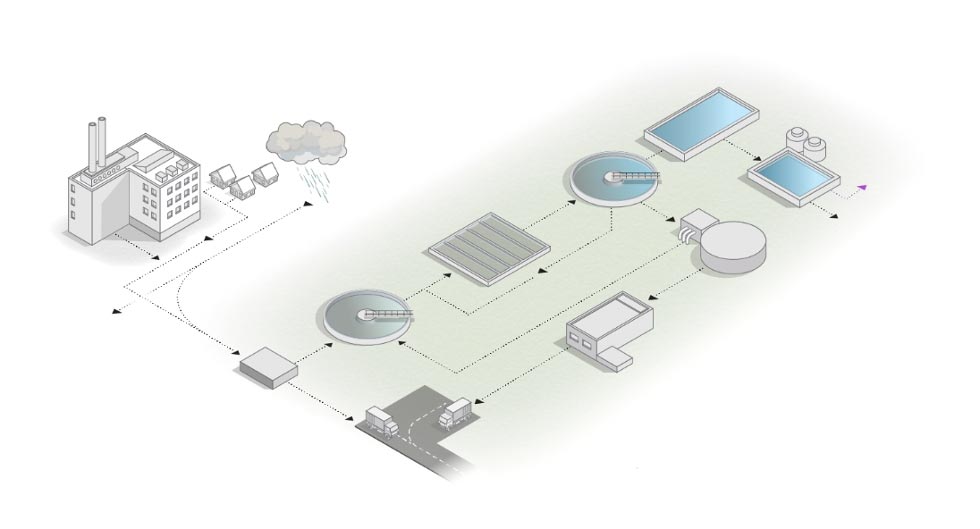
Collection Systems
Modern sanitary sewer collections systems move wastewater through a series of pipes from residential buildings, businesses, and industrial sites to wastewater treatment facilities for processing and discharge. Some older systems more widely known as combined sewer systems also carry stormwater runoff in addition to the wastewater from residential and commercial sources.
The wastewater flows through underground sewer mains, usually by gravity, but sometimes assisted by pumps situated at lift stations. Depending on the topography of an area, these force mains can vary in length up to a few miles long. Interceptors are locations where two lines meet and flow into a larger pipe, and can include large chambers accessible by manholes.
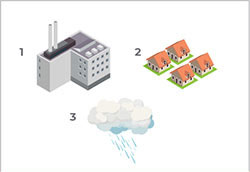
1. Industrial
2. Residential
3. Stormwater
Preliminary and Primary Treatment
Preliminary treatment is typically the first process within the treatment plant, and consists of screening and de-gritting. Screening is the process of removing trash, rags, and other debris by passing the water through a mechanical screen or rotating drum. Grit is removed by reducing the velocity of the wastewater so that heavier inorganic particles like pebbles and sand can settle to the bottom and be removed via gravity. The grit and screenings are washed and compacted before being collected in a dumpster. These preliminary processes are very important for modern water resource recovery facilities, as grit and debris can irreparably harm downstream processes including primary clarifier mechanisms, aeration diffusers, and membranes.
During primary treatment, primary clarifiers allow organic solids to settle through gravity, while fats, oils and greases are allowed to float to the surface. The settled solids are referred to as primary sludge, and often are thickened in a downstream process before delivery into an anaerobic digester. The floating fat, oil and grease is collected from the surface and are typically added directly to the anaerobic digester. A typical primary clarifier will remove approximately 70% of the solids and 45% of the Biochemical Oxygen Demand from the screened wastewater. Modern facilities that operate enhanced biological nutrient removal processes often extract or ferment the carbon in the primary sludge and dose this side stream into anaerobic or anoxic processes downstream, as a food source for the respective biology.
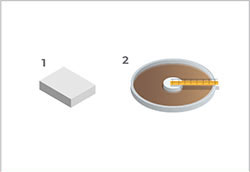
1. Screen/Grit Removal
2. Primary Clarifier
Secondary Treatment
Secondary treatment removes the soluble organic matter, nutrients such as nitrogen and phosphorus, and most of the suspended solids that escape primary treatment. Most often, biological processes are used in which microbes metabolise organic compounds and nutrients to grow and reproduce. The two most common biological secondary treatment processes are attached growth and suspended growth systems. A suspended growth process fosters the growth of suspended microorganism flocs from individual organisms already present in the wastewater and in the return activated sludge. The flocs contain organisms that can remove the pollutants through aerobic, anoxic, and anaerobic environments. Once the pollutants are removed, the flocs are sent to a secondary clarification process where they separate from the water via gravity. A portion of sludge in the bottom of the secondary clarifier is then directed back upstream to blend with the primary effluent (Return Activated Sludge) to create mixed liquor. The remainder of the sludge is removed from the process (Waste Activated Sludge) to create the ideal ecology of microorganisms. Attached growth systems rely on the microorganisms to attach to a media, and create a biofilm. The settled sewage is either mixed or sprinkled over the biofilm coated media where the microorganisms remove the pollutants. Like the suspended growth process, biofilm fragments and suspended flocs are sent to a secondary clarifier for separation where sludge is recycled and wasted and clean water is discharged to the next process.
For biological treatment to function efficiently, organisms require nutrients in a balanced ratio, including carbon, nitrogen, and phosphorus (referenced as C:N:P), as well as trace elements including iron, copper, zinc, nickel, manganese, potassium, sulphur, and other components which are typically present in wastewater. The commonly accepted C:N:P Ratio is 100:5:1, although some facilities thrive outside of this ratio, while others experience polysaccharide slime formation or filamentous bacteria growth that inhibit the biology and settling in the secondary clarifier.
Multiple biological processes can be employed to complete secondary treatment, including plug flow aeration basins, complete mix aeration tanks, sequencing batch reactors, oxidation ditches, trickling filters, moving bed biological reactors, integrated fixed film activated sludge, and others.
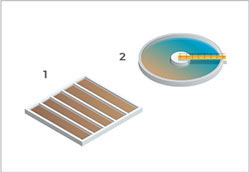
1. Aeration
2. Secondary Clarifier
Tertiary Treatment
In tertiary treatment, techniques such as filtration, disinfection, carbon absorption, and other processes are used to remove the remaining organic load, suspended or dissolved solids, pathogens and heavy metals that pass through other treatment processes. Also called effluent polishing, tertiary treatment raises the effluent quality to the level suitable to its intended use, whether for discharge into lakes, rivers, or oceans, re-use as non-crop irrigation (parks, golf courses, greenways, etc), groundwater recharge, or in certain cases, as influent to drinking water plants. Wastewater plant effluent must be monitored to ensure compliance with effluent permit limits, which vary based on jurisdiction and country.
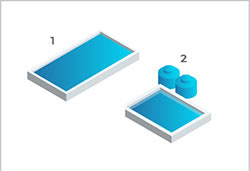
1. Filtration
2. Disinfection
Solids Handling
The method for handling the sludge removed from the process depends on the volume of solids as well as other site-specific conditions. Aerobic digestion is often used by facilities less than 30 million litres per day of inflow. Waste Activated Sludge and if present, Primary Sludge, are added to an aerated reactor where microorganisms feast on the organics and microorganisms present in the sludge to reduce the volatile solids content and the overall mass of sludge. Anaerobic digestion is typically used at facilities greater than 30 million litres per day of inflow, and involves the use of sealed reactors to create an anaerobic environment for different organisms to feast on the organics and microorganisms in the sludge through the processes of acidogenesis and methanogenesis. The methane formed by anaerobic digestion can be used to fuel boilers to heat the digester, flared, or cleaned and repurposed as a green energy source.
Thickening involves concentrating the sludge by removing a percentage of the liquid portion by adding polymer compounds, and is often employed before anaerobic digestion. Dewatering with belt presses, centrifuges or other means further concentrates sludge into a cake. The cake can be further dried, or simply disposed through land application or landfills./p>
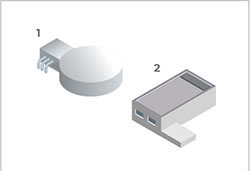
1. Thickening and Digestion
2. Slude Dewatering and Biosolids Processing
Water Intelligence
A growing field of expertise within the wastewater treatment industry, Water Intelligence Systems use digital technologies, advanced sensors, controllers, and algorithms to allow plant operators to increase efficiencies leading to overall cost savings in running the plant.
Claros, Claros, the Water Intelligence System from Hach, integrates all plant data sources, including system data, device data, and manually-collected data, driving decisions to maximise efficiency and cost savings.
With these systems, data on flow rate, water composition, dissolved-oxygen, nutrient levels, and other factors are more easily tracked and verified. This leads to more responsive treatment options, automation capabilities, and data visualisation and report generation.
Using data-driven insights into water quality, flow rate, and other factors, operators can reduce overtreatment (chemicals as well as aeration blower run time) while knowing their plant will remain within compliance limits.
As regulations become more stringent and plants need to find cost-savings, Water Intelligence Systems such as Claros will become more important and widely adopted. And with the Hach’s growing suite of Claros-Enabled sensors, controllers, devices, Process Management systems, and lab equipment, operators can configure a system that fits the unique requirements of any plant.
Regulations
Regulations and permit limits vary from region to region and country to country. Generally, target limits are established by the acting authority, and plants measure and report to demonstrate compliance with established limits. In this way, important parameters that indicate water quality and environmental and health standards are monitored and maintained, ensuring the continued health and safety of the populations being served.
In the UK, AMP7 is the most ambitious cycle yet with new and tighter regulatory consent limits for municipal wastewater companies. Read more about how Hach can help wastewater companies to maintain Phosphorus consents as low as 0.1 mg/L within a tight budget: https://uk.hach.com/AMP7
For information regarding regulations in the US: https://www.epa.gov/npdes
For information regarding regulations in the EU: https://www.eea.europa.eu/themes/water/water-management
For information regarding regulations in the China: http://english.gov.cn/policies/latest_releases/2015/04/16/content_281475090170164.htm
Utflöde och återanvändning
Medan avloppsvatten från reningsverk släpps ofta ut i miljön i floder, hav, eller andra vattendrag, finns det en mängd andra alternativ för utsläpp. Dessa omfattar jordbruksbevattning, användning i parker och rekreationsområden (golfbanor och idrottsplatsbevattning, snötillverkning); naturreservat eller akvifär/våtmark/mossladdning; industriella användningsområden såsom processvatten; gaturengöring; eller direkt drickbar återanvändning där vattnet leds till en dricksvattenanläggning för ytterligare behandling




